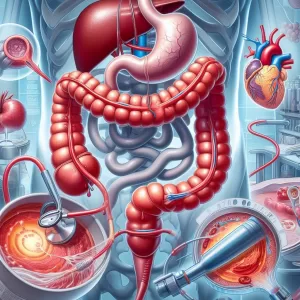What is Cervical Biopsy: Overview, Benefits, and Expected Results
Definition and Overview
A cervical biopsy is a gynecologic procedure used to obtain a tissue sample from the cervix, which is then examined under the microscope to check for abnormalities and signs of disease. This test is most commonly done to diagnose cancer or to assess a woman’s risk for cervical cancer. This is, however, not a purely diagnostic procedure as it can also be used to remove abnormal tissue from the cervix as well as to administer treatment to precancerous cells.
There are different methods used in performing cervical biopsies, namely, punch biopsy, cone biopsy, or endocervical curettage. Like any other medical procedure, there are certain risks and complications associated with the procedure, but proper planning and preparation can help prevent these from occurring.
Who Should Undergo and Expected Results
A cervical biopsy becomes necessary when some abnormalities are detected by a routine pelvic exam or a Pap smear test. It is often used to confirm a suspected diagnosis by taking a tissue sample from the cervix, thus allowing a closer analysis of the cervical cells, usually to check for pre-cancerous conditions. In some cases, the procedure is performed to treat abnormal cells found in the cervix.
A cervical biopsy is often used in the diagnosis and treatment of several gynecological diseases, such as:
- HPV or human papillomavirus – This is a sexually transmitted infection associated with a heightened risk of cervical cancer and other types of genital cancers
- Cervical polyps
- Genital warts
- Cervical cancer
- Diethylstilbestrol (DES) exposure
The results of a cervical biopsy will not be readily available after the procedure. The patient will be asked to wait for her doctor to contact her about the results, which can be:
- Negative – This means that the patient’s cervix is completely normal.
- Positive – Some cancerous or pre-cancerous cells were found during the biopsy.
Following a positive biopsy result, the patient may begin discussing possible treatment options with her doctor.
How is the Procedure Performed?
A cervical biopsy is usually scheduled about a week before a woman begins her period. This is because menstruation, along with other factors such as acute inflammation of the pelvic or cervix, may negatively affect the accuracy of cervical biopsy results.
During the day of the biopsy, the patient will be asked to put on a hospital gown and empty the bladder prior to the procedure. It is performed in an examination room, where the patient will be asked to lie down on an examination table with special support for the legs and feet. The position is similar to that required for a pelvic exam.
The procedure begins with the doctor inserting a speculum into the vagina; the purpose is to keep the vagina open and to give the doctor access to the cervix.
In many cases, a cervical biopsy is preceded by a colposcopy, in which the doctor will use a colposcope, a special instrument equipped with a special microscope-like lens that is positioned just outside the vaginal opening. This allows the doctor to inspect the cervix prior to performing the actual biopsy.
If necessary, the doctor may also put an acetic acid solution in the cervix. This may cause a burning sensation, but is very helpful in detecting abnormal cells. Once the site of the abnormal cells is known, the doctor will inject a small needle containing an anesthetic to numb the area, then use special instruments to remove one or more tissue samples.
The actual part of the cervix where the sample is taken as well as the type of anesthetic and instrument used will differ depending on what type of cervical biopsy is necessary or more appropriate.
Different Types of Cervical Biopsy
Cone biopsy – In a cone biopsy, the doctor uses a laser instrument or a surgical scalpel to remove the tissue sample from the cervix while the patient is under either regional or general anesthesia. After a cone biopsy, the patient will need to use a pressure dressing in the cervix, and will be instructed on when and how to remove the said dressing.
Punch biopsy – In a punch biopsy, the doctor uses a rounded blade, similar to a paper puncher, to take out some tissue samples. This also allows the doctor to take several samples from different parts of the cervix in a single session.
Endocervical curettage – In this type of biopsy, the doctor scrapes some tissue samples from the inside of the cervical canal, which is a part of the cervix that is not visible from the outside. To do so, a special tool called endocervical curette or brush is used.
After the Procedure
The obtained samples are sent to a laboratory for further analysis. The patient, on the other hand, is taken to a recovery room where her breathing, blood pressure, and pulse rate are monitored prior to being discharged. In a simple, uncomplicated biopsy that did not require anesthetics, the patient may be discharged in less than an hour. However, if the patient received regional or general anesthesia, she may need to stay in the recovery room a bit longer. It is normal for anesthetics to cause drowsiness several hours after they are administered, so it is best for patients to arrange for a ride home. All types of cervical biopsies are outpatient procedures and do not require the patient to stay overnight in the hospital unless there are complications.
It is normal for women to bleed after the procedure. The bleeding typically changes into a darker discharge or mild spotting within the next several days.
Cramping is also normal, but if it is severe or prevents the patient from performing her usual activities, she may take pain relievers prescribed by her doctor. Patients should not take pain relievers without the advice from their doctor, as some pain medications may increase her risk of bleeding.
Possible Risks and Complications
Like other medical procedures, a cervical biopsy comes with certain risks and possible complications, primarily:
- Infection
- Bleeding
Certain types of biopsies, particularly the cone biopsy, may also cause scarring and permanent changes in the cervix that may, in effect, raise a woman’s risk of:
- Infertility
- Miscarriage
In order to prevent any risks and complications from arising, a patient should cooperate with her doctor in preparing for the procedure. This involves informing her gynecologist about any allergies or sensitivity she may have to any medications as well as whether she is or may be pregnant.
Pregnant women can only undergo some, but not all, types of cervical biopsies. Also, women who are taking NSAIDs such as ibuprofen, aspirin, or naproxen will be asked to stop taking these medications for a certain period before the biopsy is performed, as these drugs are known to increase the risk of bleeding.
Patients should also follow all post-procedural instructions given by their gynecologist. Generally, they are advised to refrain from using tampons, performing strenuous activities, lifting heavy objects, or having sexual intercourse for a week or so following the procedure.
If the patient experiences heavy bleeding, fever, chills, a foul-smelling discharge, and severe pain in the lower abdominal region, she should inform her doctor right away.
References:
American College of Obstetricians and Gynecologists. ACOG Practice Bulletin No. 99: Management of abnormal cervical cytology and histology. Obstet Gynecol. 2008;112(6):1419-1444. PMID: 19037054 http://www.ncbi.nlm.nih.gov/pubmed/19037054
American College of Obstetricians and Gynecologists. ACOG Practice Bulletin No. 131: Screening for cervical cancer. Obstet Gynecol. 2012;120(5):1222-1238. PMID: 23090560 http://www.ncbi.nlm.nih.gov/pubmed/23090560
/trp_language]
**What is a Cervical Biopsy?**
**Overview:**
A cervical biopsy is a procedure used to examine a sample of tissue from the cervix, the opening of the uterus. It is commonly performed to investigate abnormal cells or changes in the cervix, such as those detected during a Pap smear or colposcopy.
**Benefits of a Cervical Biopsy:**
* **Confirms diagnosis:** The biopsy provides a definitive diagnosis of precancerous or cancerous changes in the cervix.
* **Guides treatment:** The type of biopsy obtained can help guide appropriate treatment options, such as surgery, radiation therapy, or chemotherapy.
* **Monitoring:** A biopsy can be repeated over time to monitor the effectiveness of treatment and detect any recurrence of abnormal cells.
**Types of Cervical Biopsies:**
**1. Punch biopsy:** A small, circular piece of tissue is removed using a circular punch tool.
**2. Loop electrosurgical excision procedure (LEEP):** A thin, electrified wire loop is used to remove a larger sample of tissue.
**3. Cone biopsy:** A cone-shaped piece of tissue is removed from the cervix using a scalpel or laser.
**Expected Results:**
After the procedure, the tissue sample is sent to a laboratory for examination under a microscope. Possible results include:
* **Normal:** The tissue is healthy and shows no abnormal cells.
* **Precancerous:** The tissue shows changes that have the potential to become cancerous, known as cervical intraepithelial neoplasia (CIN).
* **Cancerous:** The tissue shows cells that are cancerous.
**Procedure Details:**
A cervical biopsy is typically performed in a doctor’s office or clinic with local anesthesia. The procedure takes a few minutes and involves the following steps:
* **Speculum exam:** The cervix is visualized using a speculum to widen the vaginal canal.
* **Cervical cleaning:** The cervix is cleaned to remove mucus and any other substances that could interfere with the biopsy.
* **Tissue removal:** The biopsy tool is used to remove a sample of tissue from the cervix.
* **Bleeding control:** Any bleeding is stopped using cauterization or pressure applied to the biopsy site.
**Post-Procedure Care:**
After the cervical biopsy, it is common to experience some vaginal bleeding, cramping, and discomfort. Rest and pain medication can be taken as needed. It is important to avoid strenuous activity, intercourse, and using tampons until the bleeding stops.
2 Comments
Leave a Reply
Popular Articles








## What is a cervical biopsy?
A **cervical biopsy ** is a medical procedure that involves removing a small sample of tissue from the cervix for laboratory examination. This exam is generally done to determine the cause of abnormal cervical cells, such as those detected by a Pap test.
**Benefits of a cervical biopsy**
A cervical biopsy can provide valuable information that can help guide further medical care:
Determine the cause of abnormal cervical cells, such as:
**Expected results **
The expected results of a cervical biopsy can vary depending on the individual and the reason for the procedure.
**Normal results:**
A normal biopsy result indicates that the cervical tissue is healthy with no abnormal cells.
**Abnormal results:**
An abnormal biopsy result can indicate the presence of cervical cell changes ranging from mild (low-grade dysplasia) to severe (high-grade dysplasia or carcinoma in situ). These findings may recommend further evaluation or treatment.
*To provide more accurate advice, I would need specific information about your situation.
## What is Cervical Biopsy: Overview, Benefits, and Expected Results